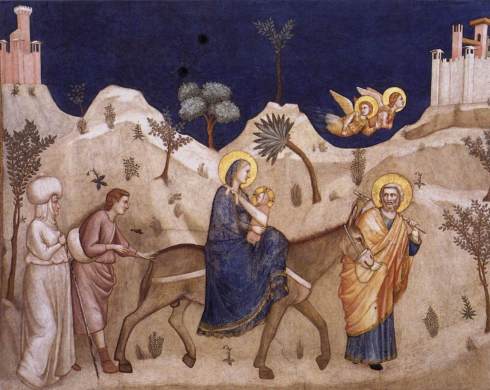Today, a Friday in Easter, I am going post an article taken from the regular column written by Bishop James Conley of Lincoln Nebraska as a special reflection for Good Friday which of course, was last month.
There are a couple of reasons for this. Simplest first, I missed the chance to post it Good Friday and wanted to find a reason to bring it to your attention nevertheless!.
Second, we have just featured Carrie Gress’s book The Marian Option book in which she discusses how a focus on Our Lady can be so powerful in leading us to her son; and how in turn, this can be the answer for cultural renewal in our age. I think that the Bishop’s article illustrates powerfully how this is so.
The third reason relates to a personal refelction of mine. It highlights for me how in sacred time, the cycles of sacred time, in the year and in the week are all participations in the ‘story’ of redemption in which each of us has a story. So in this sense first of all, Friday is not simply the arbitrary name of a day that could as easily be any other day. The very character of Friday is inherently different from, say Thursday. In this sense, every Friday participates in some way in the Friday of Fridays – Good Friday; just as every Sunday participates in the Sunday of Sundays, Easter Sunday.
Similarly, in the milestones of the story of our own lives as Christians we participate in this death to self, and ressurection of the new person in Christ through the triple sacrament of Baptism, Confirmation and the Eucharist. In this life, the Christian life, it seems to me, offers this promise – not of a life without sorrow or suffering – but rather one of a joy that transcends suffering through love of Him and His love for us.
So even in the Easter season we can spare a thought for the death and suffering of Christ on Friday in anticipation of his Resurrection; and who better to articulate that thought for us than His Mother.
So Bishop Conley writes:
In the last two weeks of Lent, traditionally called Passiontide, we are called to think often of the love of Our Lord, Jesus Christ, and on the suffering he endured for our salvation, through his passion and death. The Lord knew that the hour of his crucifixion was coming, and, as the Sacred Scriptures tell us, this weighed heavily on his heart.
Blessed John Henry Newman wrote that during these last weeks of Lent, we are “called upon to raise our hearts to Christ, and to have keen feelings and piercing thoughts of sorrow and shame, of compunction and of gratitude, of love and tender affection and horror and anguish, at the review of those awful sufferings whereby our salvation has been purchased.”
A very powerful and efficacious way that we can call to mind the gift of Christ’s love, manifested in his passion, is by remembering and reflecting on the sorrowful sufferings of his dear mother. For that reason, it is a long-standing Catholic custom, to remember the sorrows of the Blessed Virgin Mary on the Friday before Palm Sunday.
Mary’s heart was “pierced,” as Scripture says, by the evil words said against her son, who came into the world to give new life. And her heart was pierced, too, by watching her son face anguish. Every mother knows what agony it is to watch a child suffer. To remember Christ’s suffering—which was undeserved and freely given—we can remember what it must have been to watch the gift of his suffering through the eyes of his mother.
Mary was sorrowful at her family’s flight into Egypt, in which they fled from their homeland to spare her young son’s life. She was sorrowful when she discovered that Jesus was lost as a child, for three days, before being found again in the Temple of the Lord.
Every mother—indeed every parent—knows the intensity of desire to protect a child, at any cost. Every parent knows the challenge of sacrificing for a child, and the worry and anxiety that comes when a child is lost. To remember that Christ was hated by the world from the very beginning, and that he had to give everything to do the Lord’s will, we can imagine what sorrow that must have caused for his loving mother.
Mary was sorrowful when she met her son, who was crowned with thorns and carrying a cross, on the road to Calvary. She was sorrowful when he was lifted upon the cross, to die. She was sorrowful when his side was pierced, and blood and water poured out. Mary was sorrowful when her son—her beloved son, a gift from the Lord—was laid in the tomb of a stranger.
Jesus Christ gave his life for us. He suffered for us. He died to conquer death, to atone for our sins, to open the doorway to eternity in heaven with God. We must always remember that Jesus was fully God, but also fully man. He loved his mother, and laughed with his friends, and experienced, just as anyone would, the pain of his passion and death. But the Lord freely gave himself as a sacrifice for our sake, because of his great love for every one of us.
To understand the gift that Christ gives us, and how much he endured for love of us, we can look at his passion through the eyes of his mother.
“They shall look upon me whom they have pierced,” says the Lord to the prophet Zechariah, “and they shall mourn for Him, as one mourns for his only son.” When we experience the mourning of the Blessed Mother, we become as her true children, and as true brothers and sisters of the Lord.”
During this season of Passiontide, in which we call to mind the love outpoured in Christ’s suffering for us, let us pray that we might see the love of Jesus Christ through the eyes of his Blessed Mother. Let us pray that through her eyes, we might grow in love for the Lord. If we experience the sorrow and mourning of the Blessed Mother, we can only grow to love her son, and if we grow to love him, we will know him, and serve him, as he calls us.
Let us pray, too, that we might see ourselves through the Blessed Mother’s eyes: that we might know how much the Lord loves us, how much he has given for us, and how much he desires that we repent of our sins, and follow him. Let us confess our sins, so that we might grow in holiness, as she was holy. Let us fast and sacrifice, so that we might have her purity of vision and purpose.
Let us pray, as we prepare for Easter, that we might know the sorrow of the Blessed Mother, so that, in Christ’s resurrection, we will know her true, lasting, and perfect joy
You can read Bishop Conley’s regular column at the website of the Southern Nebraska Register, here, it is a rich seam to mine and I would encourage all to visit regularly.



The images above are by Murillo, Giotto and Hans Holbein the Elder respectively. Sometimes they help me to focus on Mary’s own suffering by protraying it directly. In other images, such as the Holbein, I imagine myself as Mary observing what is being protrayed. DC
